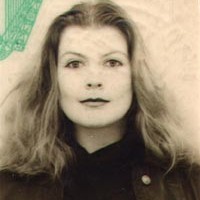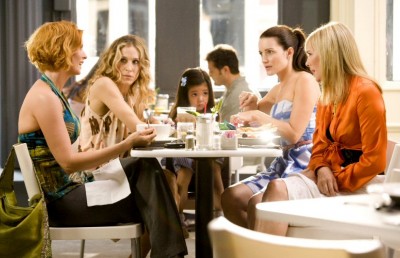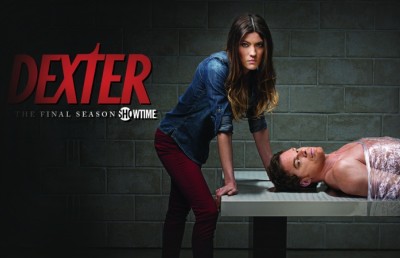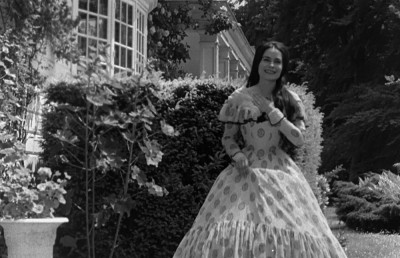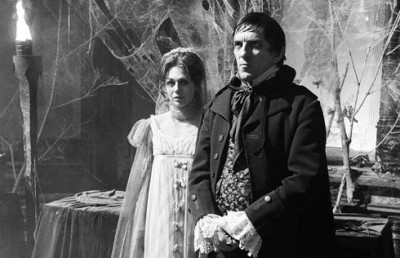Robert Towne’s Television Years
From The Lloyd Bridges Show to The Outer Limits
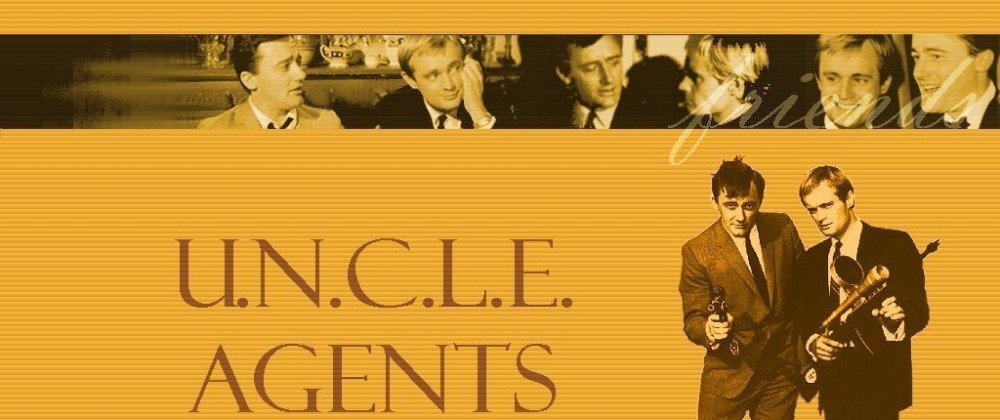
“Theme,” states Margaret Mehring, “is the reason for telling stories. Theme is the work of the artist” (Mehring, 1990: 221). 1 While Robert Towne’s early Sixties work is primarily generic we can also detect those points in the texts where his concerns depart from the narratives’ direct concerns and express his personal worldview. If we accept the screenplay as a finite form with certain formal limitations, the genre work is an even more compressed and specialised (or limited) vision. While screenwriters might always be said to be ‘for hire,’ given their particular situation in the chain of production and the customary system of vertical integration, it is particularly the case at the commencement of any screenwriter’s career that their efforts are at the behest of producers and directors and their choices are naturally limited. Thus it was that Towne’s career began with the help of producer Roger Corman and he then worked for several television shows in the early 1960s.
The start of the writer’s career is deeply rooted in exploitation cinema, episodic television and the rules of cinematic genres. James Monaco says that, “movie genres are simply formulaic patterns, some stricter than others” (Monaco, 1979: 54). Barry Langford explains that genre films can be “understood as the systematic, routinised production of genre films for a regular mass-audience spectatorship” (Langford, 2005: 274). Genre could also be said to exist in different stages of development. According to Thomas Schatz, whose Hollywood Genre (1981) encapsulates many of the aspects of writings on the subject, genres evolve, from a pure, conventionalized form that becomes a purely self-conscious form. He quotes Foçillon, who observes that there is an experimental stage, a classic stage and an age of refinement which could be called a baroque or self-reflexive age (Schatz, 1981: 37). In terms of the dialogue that exists between an audience and the making of a genre film, Schatz refers to Leo Braudy whom he quotes as follows: “ ‘Change in genre occurs when the audience says, ‘That’s too infantile a form of what we believe. Show us something more complicated’.” Generic structures, then, are embedded in the audience’s collective mind. Schatz concludes, “The genre film reaffirms what the audience believes both on individual and on communal levels. Audience demand for variation does not indicate a change in believe, but rather that the belief should be re-examined, grow more complicated formally and thematically, and display, moreover, stylistic embellishment.”
Towne would come of age as a screenwriter during a period when, as Patrick McGilligan comments
…the studios were undergoing a process of collapse and renovation, when turmoil in the world meant extreme changes in narrative style and screen values, when events in Hollywood, as elsewhere, sometimes seemed a confusing, delirious stampede. Screenwriters were as ever part of and integral to what was happening on – and offscreen (McGilligan, 1996: 5).
Little is known about the programmer Fraternity Hell Week which was Towne’s very first writing job for Roger Corman. Towne said:
When they went to revise the script, they took scissors to it to cut it up. They lost all the pieces and that was the end of my first script (Dwyer, 2006: 7).
Many years later, Towne would recall the result of his first properly credited screenwriting foray for Corman as “a grim science fiction thing” that he would rather forget (Brady, 1981: 367).
When I was about 21, Corman was making two of his cheapies back-to-back in Puerto Rico and he persuaded me to take on a package deal in which I wrote a dreadful science fiction movie (The Last Woman on Earth, 1960) and worked as an actor as well. It was a deeply embarrassing experience, because I didn’t know what I was doing and I can’t act. But it was a start.
(Towne in Pirie, 1981: 150)
Sci-fi and horror may not have been Towne’s preferred genres but he then wrote for several of the more acclaimed series on American television in the early Sixties, between 1962 and 1964, including The Lloyd Bridges Show, an anthology series. He contributed two episodes to Season One: Episode 18: “My Daddy Can Beat Your Daddy,” aka “My Daddy Can Lick Your Daddy,” which was directed by John Cassavetes and starred Bridges; and also Episode 20:“A Personal Matter,” 1963.
It was around this time that Corman also asked Towne to create a script based around the embarrassing Francis Gary Powers/U-2 incident, concerning the eponymous pilot who was sent to spy on Russia and was shot down and then imprisoned by the Kremlin. The film was to be called I Flew a Spy Plane Over Russia but Towne couldn’t write fast enough so Corman made a muscleman, Steve Reeves-type outing called Atlas (1960) in Puerto Rico instead. It would appear that Towne made use of the idea in any case: he wrote it as an episode for the anthology series, The Richard Boone Show, a series which boasted Clifford Odets as story editor and featured the same cast in different weekly stories.
This is a crucial stage in Towne’s development, not least because television is perhaps the only medium which privileges the writer (and had proven its dramatic worth with the previous decade’s groundbreaking teleplays by such stalwarts as Paddy Chayefsky, Rod Serling, Reginald Rose and Gore Vidal) and therefore provides us with some testing ground for an analysis of those elements of screenplay structure which could be seen to be unencumbered with the weight of feature film collaborations; albeit the teleplays were of course written within the strict generic parameters imposed by their respective series’ producers.
The 1963 Breaking Point episode, entitled ‘So Many Pretty Girls, So Little Time,’ concerned a compulsive Don Juan, a subject which would form the basis of Shampoo (Ashby, 1975) a decade later, albeit in mutated fashion.
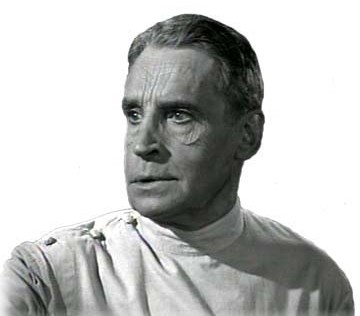
Henry Daniell, in Breaking Point
If television –society’s major storyteller– is the main reflection of our contemporary fears and desires, that which defines to us the nature of reality, the Cold War era in the United States, as elsewhere, boasted several series designed to capitalize on nuclear and foreign anxiety. The Outer Limits series was the brainchild of Leslie Stevens and Joseph Stefano (who would write the original Psycho screenplay for Alfred Hitchcock.) Stefano had a policy of hiring the best professional mainstream writers rather than pure science fiction authors and his hunch paid off with the employing of Anthony Lawrence (Roustabout), David Duncan (The Time Machine) and Dean Riesner (Dirty Harry and Rich Man, Poor Man). They, and Towne, who wrote ‘The Chameleon’, produced what were probably the most acclaimed entries to the series. Stefano wrote eleven episodes in the first series, while Stevens contributed three.
Towne’s other episode in 1964, ‘The Chameleon,’ was for the more widely screened series The Outer Limits in which the protagonist was a man trapped by his occupation: this would form the thematic basis for many later screenplays by Towne.
A man’s survival can take many shapes and the shape in which a man finds his humanity is not always a human one.
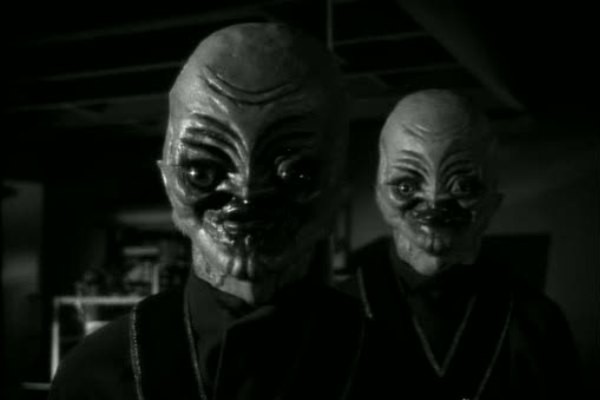
Here, the man in question (played by Robert Duvall) is a formerly compromised secret service agent who impersonates an alien in order to infiltrate a party of creatures on a downed aircraft. Also known as ‘The Seamaness Drug,’ or ‘The Drug’(the original titles), it first aired on 27 April 1964 and was directed by Gerd Oswald, who had a number of feature credits to his name. The story was devised by Towne, Lou Morheim and Stefano. Duvall’s character, Louis Mace, is a haunted man, now living as a virtual derelict. Hired by Chambers, his ex-boss, to participate in a special mission, he learns that he is to be transformed, albeit temporarily, into an alien in order to prevent nuclear war due to an amount of ‘fissionable material’ in a temporarily downed spacecraft. He has nothing to lose and knows that nobody else would do the job.
LOUIS
Whatever it involves no-one else would do it – right?
Louis is existentially aware of the meaninglessness of his existence and the script boasts the kind of dialogue that would be labeled ‘pretentious’ in the Corman films but seems oddly apposite in a series so close to human fears at the height of the Cold War. Fully half of the episode, which deals with ‘the bizarre problem of our identity,’ is devoted to Louis’ apparent fearlessness and his transformation into an alien. The contents of his life are held on a spool of genetic information:
LOUIS
You mean to say that’s all I am – everything that’s me -– is on that spool of tape?
He claims to be an expert in his chosen field and yet doesn’t appear to fully comprehend the future implications of his actions:
LOUIS
I have one capacity, Dr. Tillyard, the capacity to survive.
DR. TILLYARD
You’ve survived against mortals, and dangerous mortals no doubt. But these are aliens.
LOUIS
The scales are balanced then. We’re aliens to them. I’ll survive, Dr. Tillyard.
As he is going under, counting back from one hundred, the General, Chambers and Tillyard hear him mumbling his regrets about his past, about ‘doing something constructive,’ and finally, he says, ‘All I have is what I can do.’ His transformation is described as ‘Mace’s life being rewritten.’
As they observe his behaviour on board the spaceship, his employers wonder why he laughs continually. ‘It’s as if he knew something that we could never know.’ The aliens recognize that his impersonation is a good one – but not good enough to fool them.
LOUIS
I feel like I belong here – that ’ve been here.
ALIEN
You are –- if only in part -– one of us.
Chambers is worried:
CHAMBERS
General, we may be losing our agent –not through death but through defection.
‘Defection’ of course was another buzz word of the time, with the motif being readily applicable to any number of the political hotspots – Berlin, Cuba or Russia (including the Powers story; just as, years later, Chinatown (Polanski, 1974), a film set in the late 1930s, could be read as a gloss on the 1970s Watergate scenario.) Louis claims there are no weapons on board the ship. After a confusing ‘escape,’ [confusing because all the ‘aliens’ are wearing identical suits and masks], he agrees to accompany the surviving alien to his planet:
LOUIS
I’m neither Mace nor one of them.
He is going ‘where the chameleon no longer has to change his colour to survive.’
It is clear that as in any television episodic, this is confined by the demands not merely of the genre and the budget but also by the ambitions within the series itself. However certain tropes emerge which begin to affect Towne’s personal signature: economy of expression; beautifully crafted dialogue which speaks beyond the immediacy of the given situation and which marks a development from the Beatnik-styled pretentiousness of his Corman screenplays; a certain longing for contentment and a yearning for opportunities lost, which would be explicit here yet in later work would be rather more subtle; and, of course, a deep-seated attitude of anti-authoritarianism, an ideological (and even political) preoccupation which would form the backbone of many of Towne’s great Seventies screenplays. These elements are deeply connected to the protagonist’s character and his occupation. All of these aspects would form part of Towne’s later, more overtly characteristic screenplays; and the experience of collaborating with a production team under pressure to deliver major network television would give him a deeper understanding of the backdrop to successful production involving regular studio interference. While the teleplay boasts the customary twist ending that marks this particular series, it also seals Towne’s own optimistic view of Mace’s future.
Sean Connery began the spy movie boom playing James Bond in Dr No (Young, 1962) and From Russia With Love (Young, 1963). The success of the franchise inspired every studio in Hollywood and Europe to release everything from serious knockoffs to spoofs on the genre featuring debonair men, futuristic gadgets, exotic locales. Television’s answer came in the form of The Man from U.N.C.L.E. _ 1964 would see Towne writing ‘The Dove Affair’ for the series, his last television episode and an invaluable experience that would serve him well thirty years on, when, at the behest of Tom Cruise, he undertook one of the biggest film franchises of them all: _Mission: Impossible (De Palma, 1996). Originally aired on 15 December 1964 and directed by John Peyser, the logline for the show is as follows: THRUSH have assassinated the leader of an East European country and Napoleon Solo must stop them from taking power.
SATINE
Are you going to kill me?
SOLO
Unfortunately I can’t just because I want to –- I have to know why.
Napoleon Solo 2 plays spy vs. spy with Satine, ace intelligence agent of an Eastern European country. The nation’s leader has been assassinated by THRUSH. Both Solo and Satine want to prevent THRUSH from taking power but both are on the defensive from government officials allied with Thrush. (Ilya Kuryakin doesn’t feature in this episode.) As is usual in the series it’s divided into four acts: I is Incident in the Balkans; II The Running Men; III Togetherness, when Solo and Satine are forced to help/threaten each other on an outward bound train, encumbered by Miss Taub and her ‘juvenile delinquents’; IV is End of the Line, when, appropriately, they all get over the border and elude the army – Satine by killing the one general who can put a face to his name.
Towne’s script is replete with sardonic witticisms and Ricardo Montalban excels as Satine, the saturnine double-agent from KREB who has a variety of quirks such as a fear of teenagers – which is unfortunate, since TV stalwart June Lockhart (as Sarah Taub), and her American students, are the innocents who keep getting in the middle of the murky Cold War action. Satine is a master of disguise and serves drinks at the American Embassy, where he and Solo instantly sniff each other out at the reception where the masque of diplomacy slips regularly. Satine suffers from a stomach ailment and at one striking moment on a bridge he warns Solo, “Be ready, something may explode,” while clutching his abdomen. In fact he drops a box of cigarettes, eagerly grabbed by Russian soldiers – and it blows up, enabling Solo’s escape. The two play an amusing game of cat and mouse (and dove), finally making good their escape from their common enemy with the aid of the sweet-natured spinster teacher who achieves a poignancy decidedly uncommon in the series. The ending is somewhat unsatisfactory since the titular dove refers to a medal with the names of THRUSH agents engraved in microscopic letters. Satine gets the dove and Solo gets a picture of the dove. How could this possibly help UNCLE?! Never mind. Although Satine and Solo are ostensibly enemies, the screenplay concludes on a note of friendship – loyal servants of their respective states who wind up sharing a point of view in a script that is distinguished by masquerade, double-talk and disguise. This is a trope that would appear in Towne’s feature screenplays, despite his feelings about working in the medium:
… I wrote for television for a couple of years on shows like The Man from U.N.C.L.E. and The Outer Limits and a lesser known series called Breaking Point, which was probably the best TV show I ever scripted. But almost everything I did was fouled by continuity or editorial interference. My experiences there were not at all happy.
(Towne in Pirie, 1981: 150)

As noted on The Man From U.N.C.L.E. listserver, Towne’s later script for the 1996 Mission: Impossible feature appears to have reworked some scenes from this episode, notably the meetings on the bridge, the Embassy party and of course the internecine double-crossing. In other words, major structural elements, including themes and scenes would be reworked by Towne almost three decades later in a blockbuster film which would also bear a co-writer’s name. But there were to be many more screenplays written in the thirty years before that would happen and ‘The Dove Affair’ would be Towne’s last teleplay. What can also be noted here is something referenced by Charles Barr in his study of Hitchcock’s English films:
This initial linking of personal and public worlds, of character psychology and espionage plot, establishes with brilliant economy the logic of the film, and of the Hitchcock thriller.
(Barr, 1991: 7)
Towne was working not just from the technical and dramatic demands of the immediate plot, he was borrowing technique from those writers who honed their skills in collaboration with Alfred Hitchcock: he would in time be accused not merely of imitating their style but of stealing their plot. [[The release of Mission: Impossible 2 occasioned a barbed journalistic exchange between Towne and Stephen Farber in the pages of the Los Angeles Times on the subject of its similarities with Notorious (Hitchcock, 1946). Robert Towne, ‘M:I-2 Author to Critic: Forget it Steve, It Isn’t Notorious,’ Los Angeles Times, 05 June 2000. He defends with passion critic Farber’s accusation, “Is there any reason why a movie couldn’t have thrilling action scenes along with characterizations of substance and complexity?” The article exhibits Towne’s defence of his craft as well as displaying a sensitivity to the politics of film criticism (in a town full of critics), and of course admits to what was fairly obvious to all concerned: just as Tequila Sunrise (Towne, 1988) had been a tribute to Casablanca (Curtiz, 1942), M:I-2 similarly paid ‘homage’ to Notorious (1946, written by Ben Hecht) one of Hitchcock’s greatest works, in which an American agent, Devlin, played by Cary Grant, endangers the life of his true love, Ilsa (another Ilsa, again played by Ingrid Bergman), by asking her to spy on her Nazi husband, Claude Rains (yet another refugee from Casablanca). Not to mention Nyah’s profession as cat burglar, a reminder of one of Hitchcock’s greatest successes, To Catch a Thief (Hitchcock, 1955) (written by John Michael Hayes.) It is worth reading in full Towne’s rebuttal, and to remember just how many similarities there are between his genre works and those in the Hollywood canon, particularly as written and directed by Howard Hawks.]
In any auteurist analysis or criticism a sense of continuity and stylistic evolution is sought and traced through the main body of the author’s work. While Towne’s identity as a screen author might therefore be difficult to adduce in a decade in which he exercised very little authorial control over these elements, it is, as we have seen, possible to note signs of his distinctive approach to each of these aspects of screenplay structure in terms of narrative preoccupation and structural coherence. In other words, a style has begun to emerge. If authorship can be attributed at the level of the individual or the multiple or the collective, the screenplays we have examined so far would appear to indicate that while evident, Towne’s signature is not yet sufficiently developed to have become the most outstanding voice in the authorship model which is in any case rendered a more subtle problem by his involvement in the adapting of materials (Dyer, 1998: 151). In short, while we might not yet see an archetypal pattern or even a canonical text, we can already identify some of those formal elements of Towne’s major theme, loss, which are beginning to emerge, even through the restricted generic forms which he had already mastered.
Towne’s awkward handling of the material may have embarrassed him latterly but the model of the love triangle in Last Woman on Earth would serve as a useful indicator for later subject matter; meanwhile, Corman’s trust was repaid five years later with The Tomb of Ligeia (Corman, 1964), one of Towne’s most literate and best filmed screenplays. Of no lesser importance is Towne’s work for television, a medium which privileges the screenwriter.
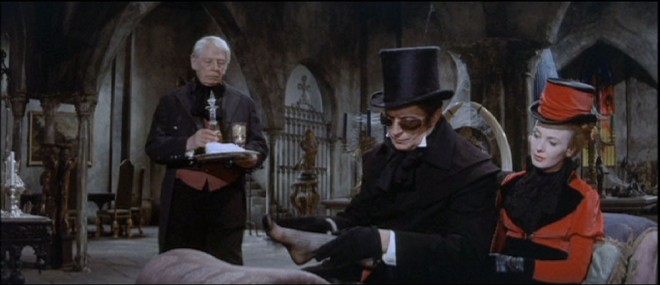
Towne’s Western script, A Time for Killing, which was circulated around Hollywood in the mid-60s, was the work which attracted the attention of Warren Beatty and gained Towne a reputation. Originally destined to be made by Corman for Columbia, it was rewritten substantially by others, not to Towne’s liking, which is ironic given the lucrative future in script doctoring ( ‘rescue fantasies,’ as he put it) that lay ahead of him. The film as shot has been described as “a typically brutal, post-Leone Western” which is set in the post-Civil War era. A Confederate prisoner is executed by a firing squad composed of Negroes. Other Confederate prisoners are enraged and break out of jail, chased by Glenn Ford, headed toward the Mexican border. The script would finally be reworked and shot by low budget specialist Phil Karlson, by which time Towne had removed his name from the credits. Even Monte Hellman withdrew from editing the film. But it served its purpose and opened doors to a niche in Hollywood, which Towne must have dreamed about as a neophyte screenwriter.
What distinguishes Towne’s work in this period is his (customary) early exposure to generic forms; and coupled with this, his leaning towards emotional realism reflected through his characters and the way they used dialogue, which was relentlessly contemporary, if occasionally pretentious, yet endlessly quotable, a fact that appealed to an actor-producer such as Warren Beatty. He had read and was impressed by Towne’s Western screenplay and legend would have it bumped into him at the office of their mutual psychoanalyst. He hired him to work on the screenplay of Bonnie and Clyde (Penn, 1967), a film of enormous importance to the seismic shift now taking place in the industry and the culture. It is self-evidently the major turning point in Towne’s work, taking off from legendary, if actual, personae at its centre, and proceeding towards a mythical resolution, it would be the bedrock of his apprenticeship and apparently his filmmaking philosophy and storytelling style with loss as his overarching thematic concern.
It will be fascinating to see what Towne will bring to the table of the final series of the acclaimed Mad Men, AMC’s original scripted production which is part of the New Golden Age of Television and which boasts a panoply of lost and flawed characters, amoral, indulgent and ground-breaking, nostalgic for a future that hasn’t quite happened and the glamour of an earlier era that seems irretrievable. The matching of writer to show seems inevitable and poses a delectable prospect for the viewer. As critic Richard Corliss stated, “auteur criticism is essentially theme criticism; and themes – as expressed through plot, characterisation, and dialogue – belong primarily to the writer” (Corliss, 1975: xxi-xxii). The abuse and misuse of power and the theme of lost friendships provides the topical nature of much of Towne’s writing; it also suffuses his personal and professional history. His body of work is fortunately discussed in several works of popular screenplay analysis, which have helped create a picture of his role in the Hollywood hierarchy. His private and public lives are necessarily intertwined and provide a fascinating biography which to a large extent fall outside the limitations of this essay, but nonetheless merit further consideration as any full consideration of authorship implies. (Not least because, like a novelist, he has regularly plundered his personal life to dramatise his stories.) The meta-narrative that constitutes Towne’s career possesses the cumulative dramatic continuity and rising action obtained in a reading of his films: it is a story of deep male friendships, collaborations, ruptured loyalties, and reversals of fortune. The dominant story arc is one of loss. As Corliss has said, “the creation of a Hollywood movie involves a complex weave of talents, properties, and personalities” (Corliss, 1972: 6).
The great irony of Towne’s career is his capacity to absorb the influences of those around him. As a director of his own material, he pays homage to classical Hollywood influences as well as a personal notion of heroism, which is rooted in traditional storytelling. The vestigial traces of his voice are evident throughout the oeuvre, collaborative and otherwise, perhaps making him a member of Corliss’ honoured screenwriting élite: the author-auteur (Corliss, 1975: 1). 3 As Michael Sragow says, “screenwriters… at their best … provide the ideas and even the imagery that galvanize their collaborators” (Sragow, 1983: 18). That ability has also rendered Towne a master adapter and interpreter: will he be the man to finally save Don Draper from himself?
© Elaine Lennon 2013
Bibliography
Books
Barr, Charles (1991). ENGLISH HITCHCOCK. Scotland: A Movie Book.
Brady, John (1981). THE CRAFT OF THE SCREENWRITER. New York: Simon & Schuster.
Corliss, Richard (1972). THE HOLLYWOOD SCREENWRITERS. New York: Avon.
Corliss, Richard (1975). TALKING PICTURES: Screenwriters in the American Cinema, Woodstock, New York: Overlook Press.
Dyer, Richard (1998). STARS. London: British Film Institute.
Langford, Barry (2005). FILM GENRE: Hollywood and Beyond. Edinburgh, Edinburgh University Press.
McGilligan, Patrick (ed.) (1996). _BACKSTORY 3: Interviews with Screenwriters of the 60s. _ Berkeley: University of California Press.
Mehring, Margaret (1990). THE SCREENPLAY: A Blend of Film Form and Content. Boston & London: Focal Press.
Monaco, James (1979). AMERICAN FILM NOW: The People, The Power, The Money, The Movies. New York, Plume Books, New American Library.
Pirie, David (ed.) (1981). ANATOMY OF THE MOVIES: Inside the Film Industry: The Money. The Power. The People. The Craft. The Movies. London: Windward Books.
Schatz, Thomas (1981). HOLLYWOOD GENRES: Formulas, Filmmaking and the Studio System. Philadelphia: Temple University Press, Philadelphia.
Sepinwall, Alan (2012). THE REVOLUTION WAS TELEVISED: The Cops, Crooks, Slingers and Slayers Who Changed TV Drama Forever.
Stempel, Tom (1992). STORYTELLERS TO THE NATION: A History of American Television Writing. Los Angeles: Continuum.
Journals, Essays & Articles
Corliss, Richard (1972), ‘The Hollywood Screenwriter,’ Film Comment, Winter 1970-71: 4-7.
Dwyer, Michael (2006), ‘Call the Script Doctor,’ The Irish Times, 22 July 2006: 7.
Sragow, Michael (1983), ‘Ghostwriters: Unraveling the Enigma of Movie Authorship,’ Film Comment 19, March-April 1983: 9-18.
Filmography (select)
The Lloyd Bridges Show (1963) TV episodes: ‘A Personal Matter’ (teleplay by Robert Towne); ‘My Daddy Can Beat Your Daddy’ (teleplay by Robert Towne)
Breaking Point (1964) TV episode: ‘So Many Pretty Girls, So Little Time’ (teleplay by Robert Towne)
The Outer Limits (1964) TV episode: ‘The Chameleon’ (teleplay by Robert Towne)
The Man From U.N.C.L.E. (1964) TV episode: ‘The Dove Affair’ (teleplay by Robert Towne)
Notes
- Mehring continues, “A theme emerges from the combination of all of the filmic and dramatic elements – both linear and non-linear. It is none of the individual elements but the amalgamation of all. It is what the completed tapestry says.” (223). ↩
- The name was apparently dreamed up by Ian Fleming, who met producer Norman Felton but didn’t want further involvement for fear of complicating his relationship with Harry Saltzmann, the producer of the James Bond film series. Nonetheless, Felton attached Fleming’s name to the outline written by Sam Rolfe which won the commission. See Tom Stempel (1992). Storytellers to the Nation: A History of American Television Writing. New York: Continuum: 102. ↩
- Corliss names ten men in this group –Ben Hecht, Preston Sturges, Norman Krasna, Frank Tashlin, George Axelrod, Peter Stone, Howard Koch, Borden Chase, Abraham Polonsky and Billy Wilder. He says of them: “To a degree rare in the commercial cinema, their personalities are indelibly stamped on their films. In their fidelity to idiosyncratic themes, plots, characterizations, styles, and moods, they won the right to be called true movie auteurs. Seven of the ten were eventually able to direct, thus nursing their visions onto the sound stage and through the editing rooms… even the failures of an auteur can be instructive: not only as critical fodder for a volume such as this, but also as proof that the American movie machine was resilient enough to endure the excesses and eccentricities of its most creative craftsmen” (Corliss. 1975: 1). ↩

